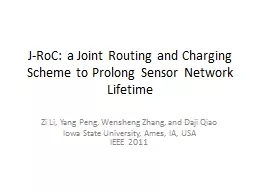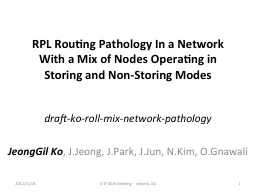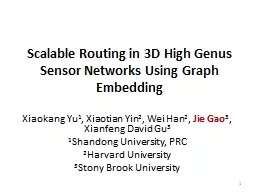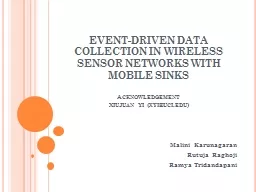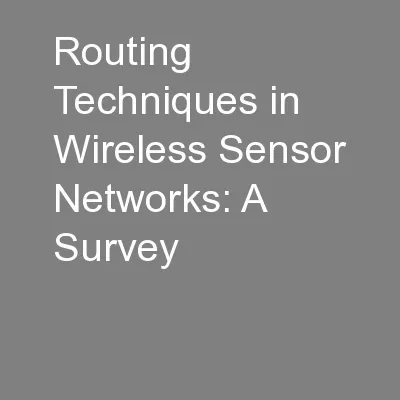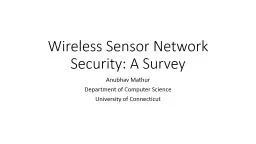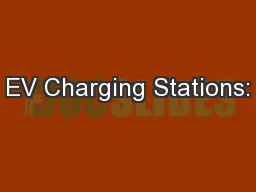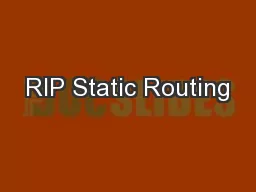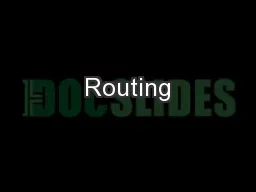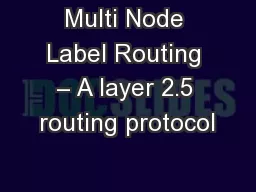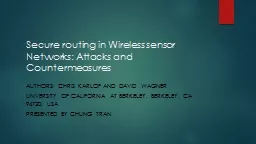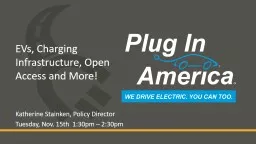PPT-J- RoC : a Joint Routing and Charging Scheme to Prolong Sensor Network
Author : mediumgeneral | Published Date : 2020-08-28
Lifetime Zi Li Yang Peng Wensheng Zhang and Daji Qiao Iowa State University Ames IA USA IEEE 2011 propose Prolong Sensor Network Lifetime Find max network
Presentation Embed Code
Download Presentation
Download Presentation The PPT/PDF document "J- RoC : a Joint Routing and Charging Sc..." is the property of its rightful owner. Permission is granted to download and print the materials on this website for personal, non-commercial use only, and to display it on your personal computer provided you do not modify the materials and that you retain all copyright notices contained in the materials. By downloading content from our website, you accept the terms of this agreement.
J- RoC : a Joint Routing and Charging Scheme to Prolong Sensor Network: Transcript
Download Rules Of Document
"J- RoC : a Joint Routing and Charging Scheme to Prolong Sensor Network"The content belongs to its owner. You may download and print it for personal use, without modification, and keep all copyright notices. By downloading, you agree to these terms.
Related Documents

